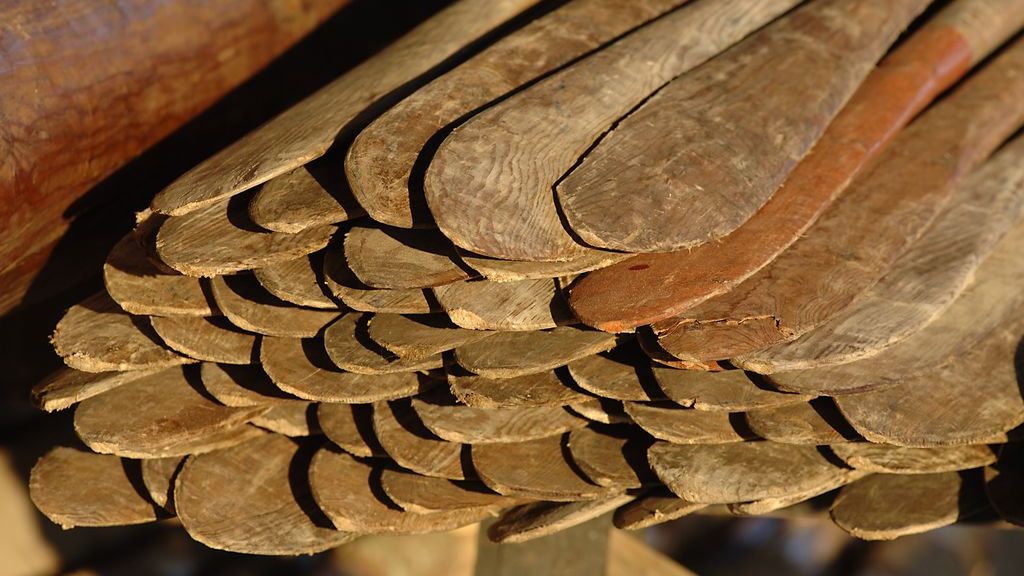Modern boatbuilders use a steam chest when fitting planks to the hulls of boats.
The planks are enclosed in the chest and heated up, which makes them more pliable and easier to manipulate into the correct shape.
12th century boatbuilders had no such machine though, and so in line with our aim of building the boat using the same tools and techniques as were available to the original builders of the Gislinge Boat in 1130, a slightly more old-school method is called for.
The idea is simple enough. A wood fire is lit and allowed to burn down to coals. Two metal rods are inserted either side of the fire and a chain suspended between them. This forms the cradle for the planks as they are lowered over the fire to be heated. The boatbuilders give the planks a good soaking with water before they carefully set them into position above the flames. They made a note of the time they started at and from there, it was then a question of repeatedly coating the planks with water and turning them every few minutes or so, until they were warmed up evenly.
As always, the humour amongst the boatbuilders was high. Working with wood in this way isn’t something they get to do every day and they were almost giddy at the prospect of the task ahead. A lot of skill is involved in reading the wood and knowing when to turn it, when to wet it and, of course, when it was ready to be set into position against the keel. It’s a team effort to heat and turn the planks – some stabilise the planks at the rear while others keep them damp and help to turn them over the coals, time and time again.
Just 20 minutes after they had started, the first plank was ready to go. It was taken from the fire pit and held in position against the keel, while Birger began clamping it in place. The boatbuilders have to move quickly here as the wood begins to stiffen again as it cools down. Wooden clamps are used to hold the board in position and are adjusted as the boatbuilders gauge the curve of the board’s line. Once the first board was in place, the second plank is brought over and the clamping process begins again. Once more, the clamps are set in place, adjusted, moved slightly and looked at from every angle until the boatbuilders are satisfied. The boards are then allowed to cool and set into position overnight.







